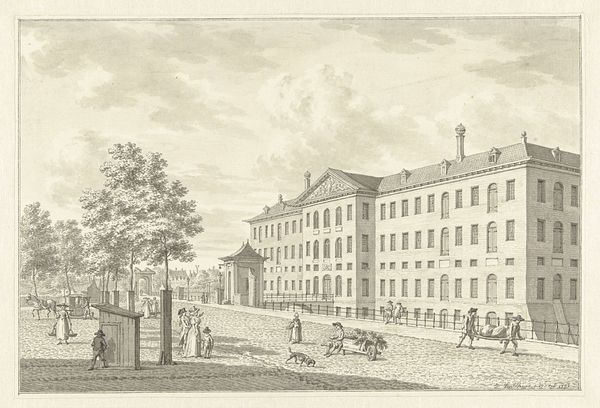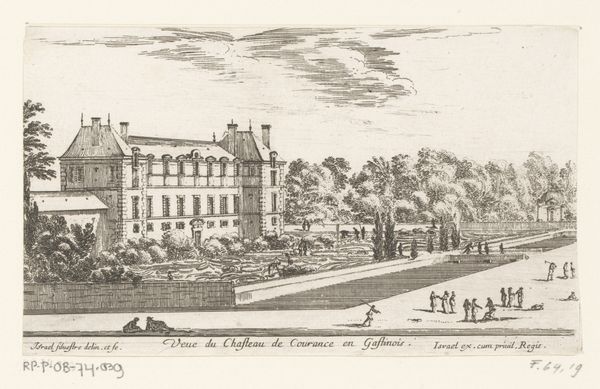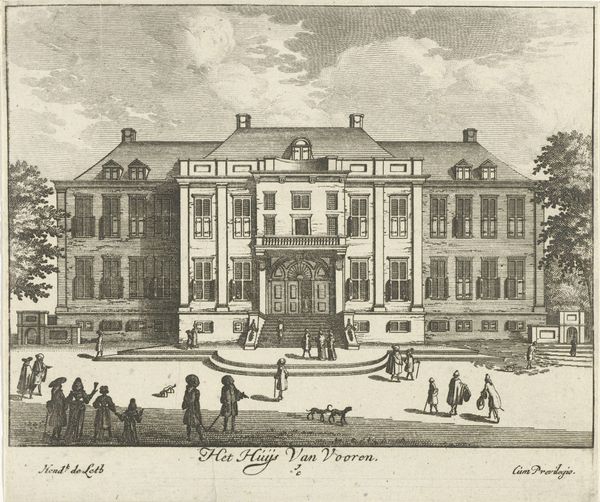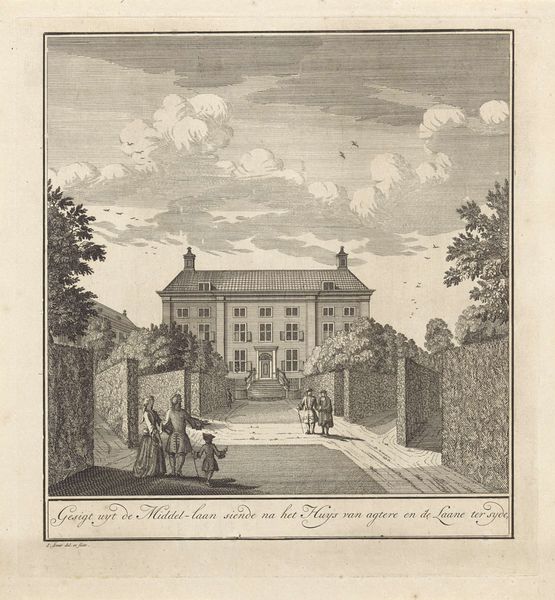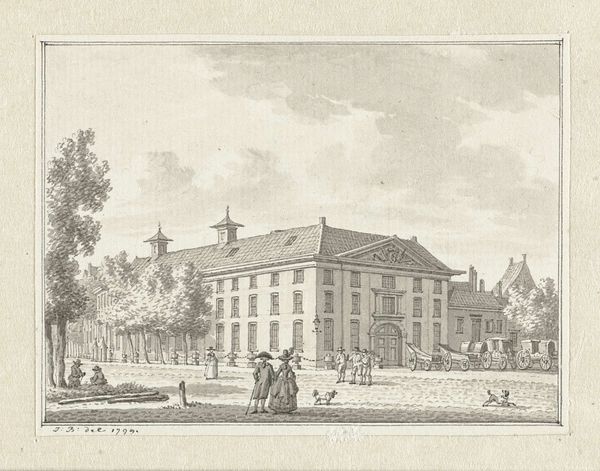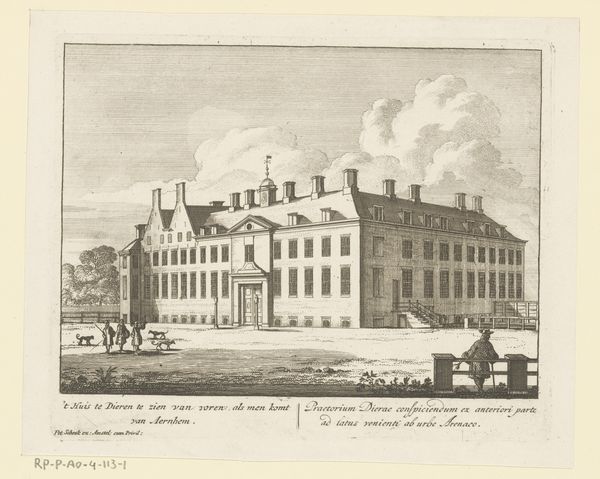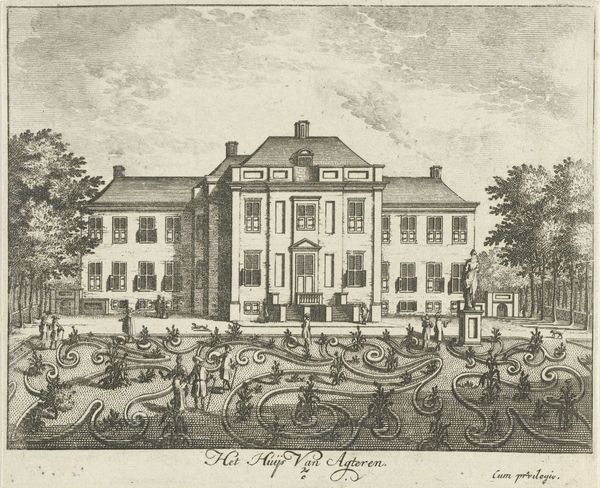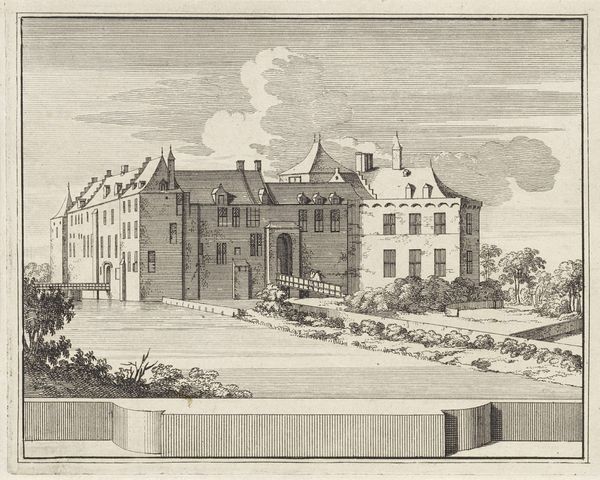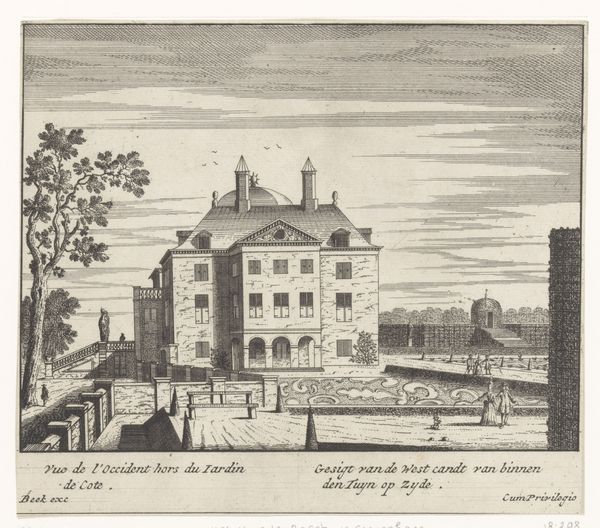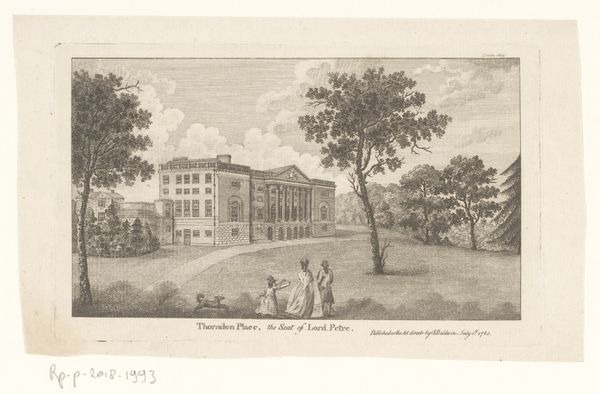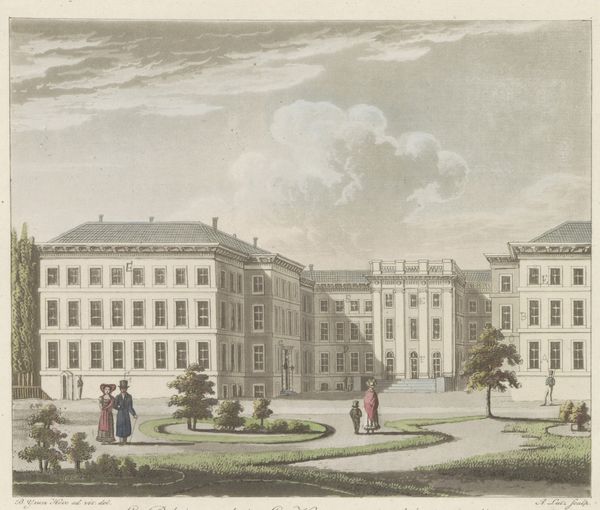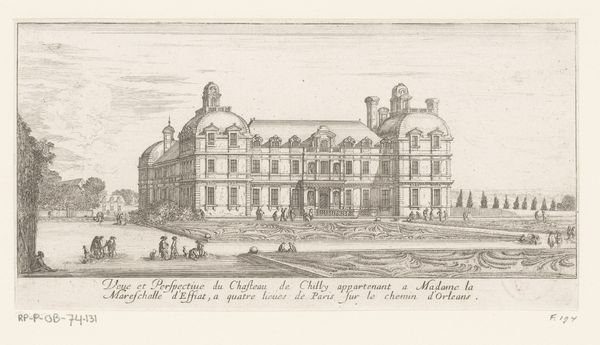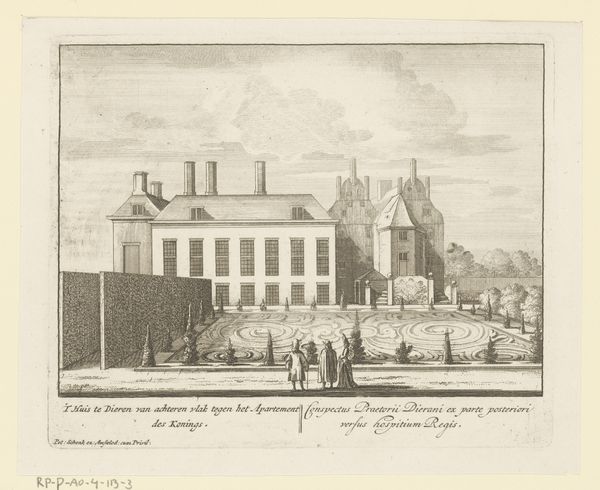
print, etching, engraving, architecture
#
aged paper
#
baroque
#
mechanical pen drawing
# print
#
pen sketch
#
etching
#
old engraving style
#
sketch book
#
landscape
#
personal sketchbook
#
sketchwork
#
pen-ink sketch
#
pen work
#
storyboard and sketchbook work
#
engraving
#
architecture
Dimensions: height 132 mm, width 160 mm
Copyright: Rijks Museum: Open Domain
Curator: Here we have an engraving titled "Zuidzijde van Paleis Soestdijk," created sometime between 1725 and 1747 by Hendrik de Leth. Editor: The first thing that strikes me is its formality. The scene is very staged, meticulously ordered, almost like a theater set. Curator: Yes, this order is reflective of the Baroque style prevalent at the time. The balanced composition mirrors the aristocratic worldview. We see not just the palace, but also the meticulously arranged grounds and the figures populating the foreground, each element conveying status. Editor: Precisely. Notice how these figures are carefully positioned. Are they truly partaking in leisurely activities or are they strategically placed to emphasize the power dynamics at play here? Who had access, who performed labor... This image speaks volumes about societal hierarchies. Curator: It's all symbolic, isn’t it? The architecture with its classical influences speaks to permanence and power. The details in the rendering—the precisely etched lines, the considered placement of light and shadow—lend the scene an almost allegorical quality. Editor: Consider also what is *not* depicted. This image chooses to highlight luxury and order while eliding all traces of struggle or hardship that likely accompanied its creation and maintenance. The engraving feels like a careful construction, deliberately omitting complex truths. Curator: That omission, that deliberate choice of imagery, reveals its own truth, doesn't it? These scenes became a record that carried idealized versions of power and taste. It reinforces cultural memory around status and place. Editor: In examining those gaps, we start to discern the narratives it’s designed to perpetuate. Curator: By focusing on this intersection between art and the real lives and histories, these kinds of pieces urge a new level of thought when considering historical records. Editor: I agree completely. Engaging with historical works in the collection using this perspective lets us be alert to social structures reflected in artworks that influence and reveal perspectives today.
Comments
No comments
Be the first to comment and join the conversation on the ultimate creative platform.
